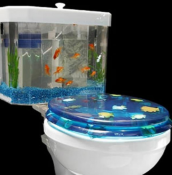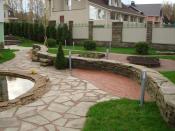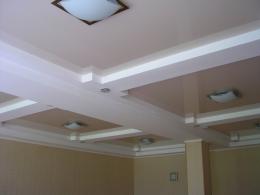Search
Login
Possible ceilings
There are many beautiful ceilings, there are very expensive ones, but there are also simpler ones. The beauty and durability of ceilings depends to a large extent on careful surface preparation.
Content
- What tasks can be solved with the ceiling
- Ceiling base preparation video
- The choice of material for the base and painting of ceilings video
- What kind of wallpaper paste the ceilings
- The way to sticker the wallpaper on the ceiling video
- How to plaster the ceiling
- Gypsum or cement plaster
- Adhesive ceiling video
- Ceiling mural video
What tasks can be solved with the ceiling
In a modern interior, ceiling systems, and sometimes these are really whole engineering structures, solve two problems simultaneously: decorative and functional.
Often, the ceiling is a multi-level or curvilinear structure, they often incorporate built-in lights, significantly expanding the lighting capabilities.

The ceiling turns into a complex system that hides many engineering communications and, at the same time, provides easy access to them.
Individual requirements for the ceiling are presented by a room with a special microclimate.
In separate rooms, such as: bathroom, conservatories, swimming pools, garages - ceiling decoration should easily tolerate changes in humidity and temperature, condensation and direct water.
In the premises of home cinemas, with the help of the ceiling, the tasks of creating a favorable acoustic environment are solved.
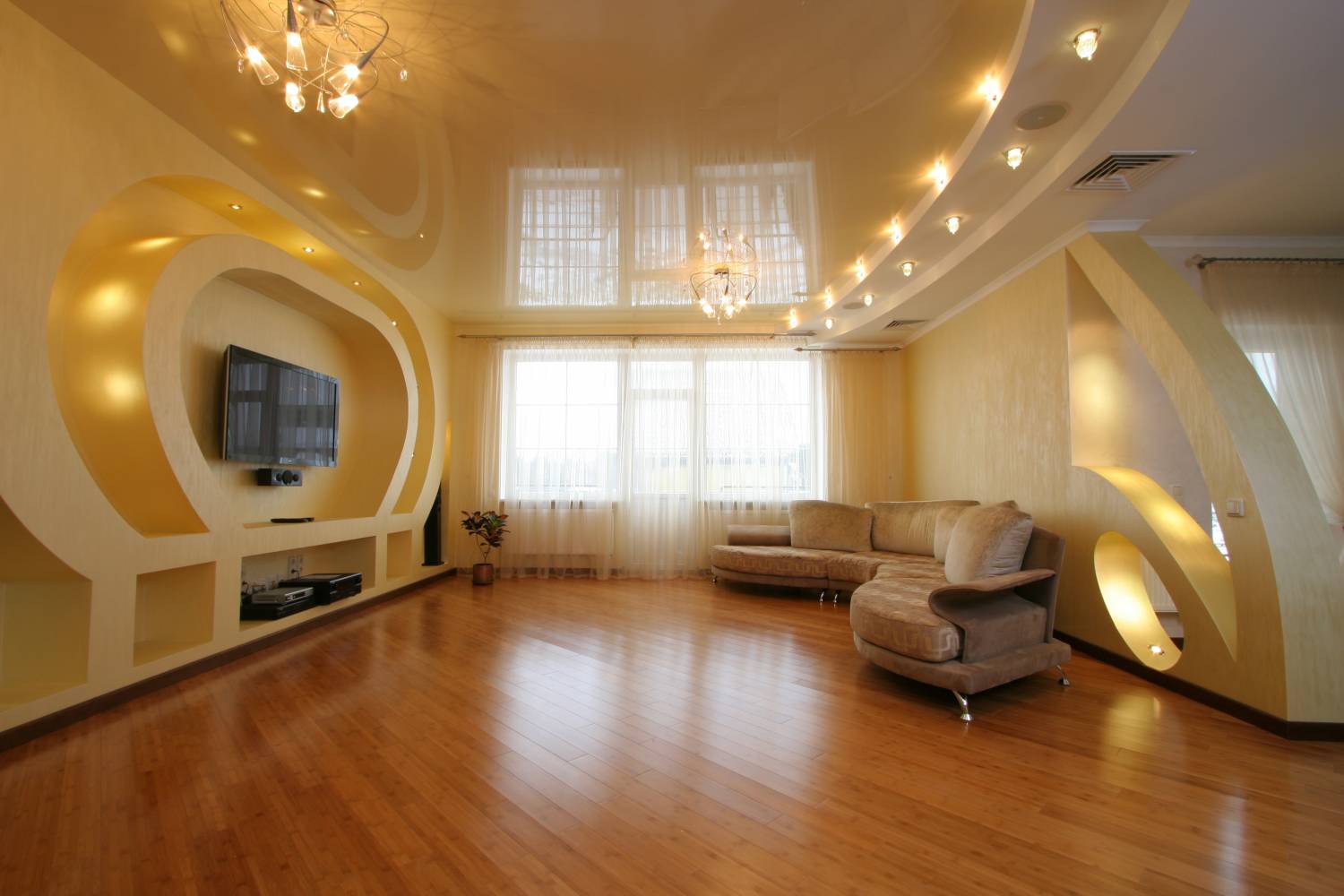
But basically, the decisive role in choosing the type of ceiling is played by the cost of finishing materials and the work of their installation.
Ceiling base preparation
In most modern homes, the ceiling plane is the underside of a reinforced concrete floor, the plane of which is never even and strictly horizontal.
Typically, the floors are assembled from separate plates, between which there are seams, they are masked primarily, potholes, chips and cracks are often found on their surface.
An exceptional case of a flat and smooth ceiling is rare. If engineering communications are not planned for it, then the surface can be smeared with a primer and putty.
Now the surface is ready for gluing wallpaper, decorative plastic plates or staining.
Unfortunately, most often you have to deal with curves, once plastered, bleached or painted, then cracked ceilings.
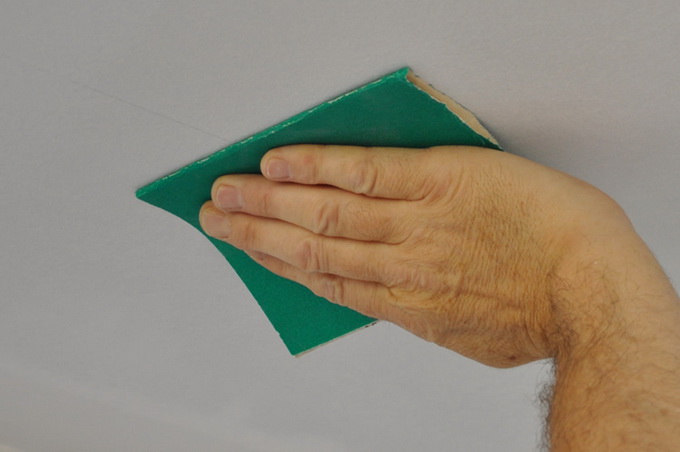
Remove old layers to the floor slab only if the surface is supposed to be painted, which means that you must first apply new layers of plaster and putty on it.
The choice of material for the base and painting of ceilings
The quality and durability of the painted ceiling depends on the quality of the surface preparation.
Note that even the quality of the paint, to a lesser extent, affects the outcome of the work, surface preparation comes to the fore.
Therefore, experts advise very carefully to the selection of all necessary materials.
When choosing a primer, plaster, putty, paint - it is necessary to take into account their advantages and disadvantages, as well as their compatibility.
Modern finishes offer a wide selection of water-based paints.

When purchasing paints, pay attention to their thixotropy (the ability to liquefy under mechanical stress and thicken at rest).
Such compositions do not drip from the roller or brush, lie on the surface evenly and without smudges, and this is an important nuance when painting the ceiling.
What kind of wallpaper paste the ceilings
Inexpensive and beautiful ceiling can be obtained using wallpaper.
Wallpaper is glued to an even, clean and dry base. For this purpose, paper or vinyl wallpapers in light colors are well suited.

Often use white wallpaper with various surface textures.
You can use wallpaper for painting.
The best option is vinyl wallpaper on a non-woven basis or glass, they are more durable, durable, able to restrain the appearance of small cracks in the plaster layer.
After gluing the wallpaper for painting, they are painted with water-based paints.
After a few years, ordinary wallpaper will have to be re-glued, the wallpaper should be repainted for painting.

You can glue the ceiling with non-woven wallpaper, the main difference is in the way the glue is applied, they only cover the ceiling, not the wallpaper.
The way to sticker the wallpaper on the ceiling
Before pasting the walls, the wallpaper is glued to the ceiling.
Two people must participate in the work.

Stepping back from the corner of the junction of the wall and the ceiling to the width of the roll, a line should be drawn on the ceiling.
An adhesive composition is applied to the wallpaper, leave it to soak for a few minutes and get to work.
In places of abutment of the walls and in the corners an allowance of 2-3 cm is made on the curvature of the walls.
One person fixes the canvas on the wall, the second supports and unwinds it as it is glued.
On the drawn line check the correct direction.
After gluing the entire canvas, check for wrinkles and tightness.
Using a spatula, smooth the surface, move from the middle of the canvas to the edges.
The following sheets are glued sequentially, usually in joint with each other, the last sheet is glued with a small approach to the wall.
How to plaster the ceiling
The traditional way to level the ceiling is to plaster it.
This method is relevant for typical prefabricated houses with a room height of 2.5-2.6 meters.

The use of plaster allows you to save every centimeter of height.
Using plaster, it is easy to level deviations in the range of 5-30 mm.
If the thickness of the plaster is more than 30 mm., There is a high probability of cracking and peeling it.

In the case of a large thickness of the plaster, it is reinforced with a fiberglass mesh, it is laid between two layers.
You can use a metal mesh, it is attached to the base before plastering.
Such a metal skeleton is used in case of insufficient adhesion of the mixture to smooth surfaces.
Gypsum or cement plaster
Cement plaster, when applied correctly, creates a strong, durable coating.
The cement layer gains full strength within 28 days, drying out naturally.
Any attempt to speed up the drying will lead to cracking. Before proceeding to the next stage of finishing, after leveling the surface with a cement mixture, a break of 1-2 weeks is necessary.
Plaster mixtures based on gypsum, in comparison with cement, dry out faster, harden not in a day, but in a matter of hours.

The use of a mixture based on gypsum significantly reduces repair time, high adhesion of the plastic mass simplifies the technology of work, this is especially important when processing ceilings.
But gypsum plasters cannot be used in rooms with a relative humidity of more than 65-70%.
Adhesive ceiling
Ceiling is most often called adhesive, to which polystyrene foam tiles with various surface reliefs are glued. These tiles have a standard size of 500x500 mm., Produce them by stamping and extrusion.
The extrusion method leads to maximum density and uniformity of the material, respectively, its water resistance.
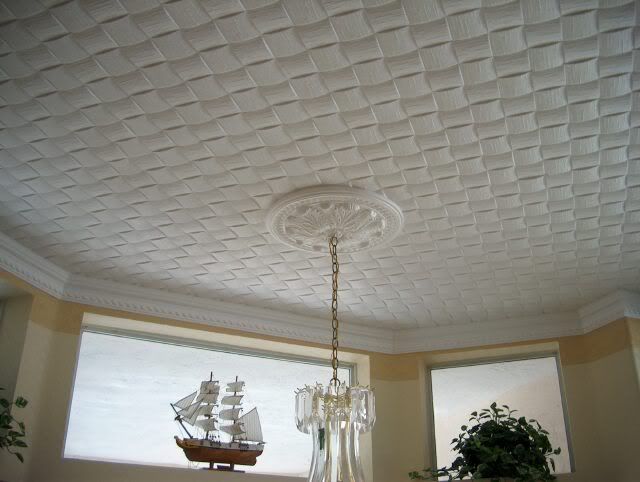
To distinguish such tiles is simple in appearance: their front side is smooth, in the context of the product resembles porous chocolate.
Tiles are fixed to any base with special polystyrene glue.
This is one of the inexpensive ways to decorate the ceiling.
Wall and ceiling lights must be installed no closer than 20-30cm. to the surface of such a ceiling, since at temperatures above 80 degrees, the tiles begin to deform.
Ceiling mural
The image obtained by painting with water-based paints on a wet layer of plaster is called a mural.
Since this is hand-painted, the production process takes a long period of time.
These are very expensive ceilings.
Cheaper and more common are non-woven murals.
To do this, on the basis of non-woven fabric, the plaster layer is firmly fixed, then, by printing, an image is applied.
The main task is to choose a plot. Installation is performed by professionals.


